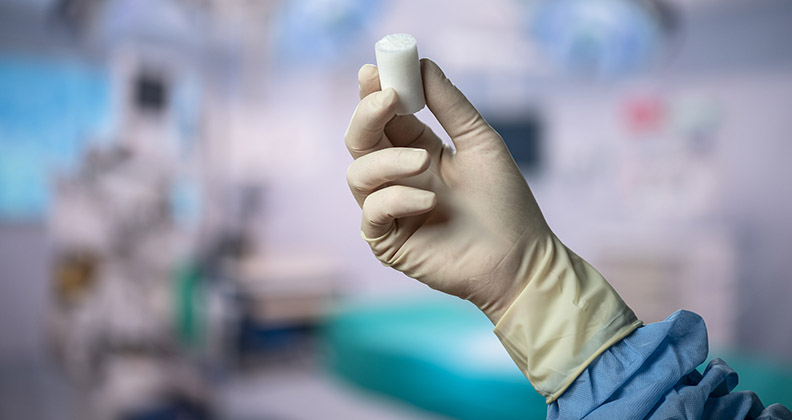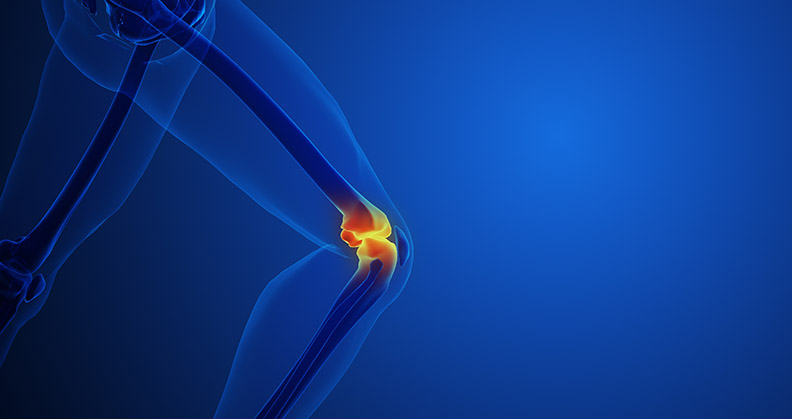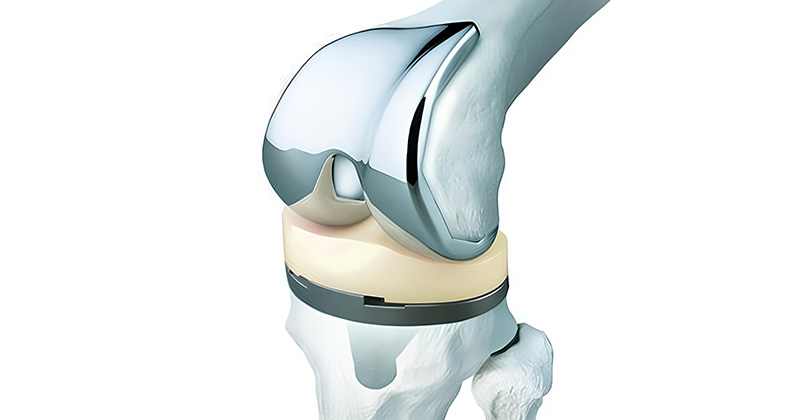
Demand for knee replacement continues on an upward trajectory. By revenue, knees account for 47% of the $21.4 billion global joint replacement market, more than hips (39%) and extremities (14%). It should come as no surprise then that most of the efforts to innovate joint replacement implants are focused on the knee.
Patient factors play a part in the steady uptick in knee replacement volume. An aging population, rising obesity rates and increasing numbers of younger patients who want to maintain active lifestyles are driving a growing demand for advanced knee replacement solutions. Expectations for excellent surgical outcomes are also increasing.
Orthopedic R&D teams are responding to these market forces by developing innovative implant designs, materials and manufacturing processes. Companies are also focused on ways to create implants that provide more natural joint movement, improved fixation and increased durability.
Personalized Matches
The development of additively manufactured and patient-specific implants that optimize anatomical fit is a priority for restor3d.
“A deeper understanding of joint biomechanics, combined with advancements in 3D printing over the past decade, has enabled the development of implants that more accurately replicate the desired kinematic profile for individual patients,” said Ken Gall, Ph.D., Co-founder and Chief Commercial Officer of restor3d. “This shifts the focus in implant design from mere survival to improved patient satisfaction.”
Knee replacement surgeons increasingly acknowledge the importance of personalized implants and alignment strategies that account for balancing hard and soft tissues throughout the knee’s range of motion.
Dr. Gall believes that personalized implants represent the future of joint replacement care. In 2023, restor3d acquired Conformis, a company focused on patient-specific knee and hip replacement implants. “A personalized implant can incorporate the claimed advantages of off-the-shelf implants while also accommodating the significant anatomical differences of individual patients,” he said.
Dr. Gall predicts that, over time, orthopedics will witness the widespread adoption of highly accurate, patient-specific implants that are precisely delivered using pre-planned enabling technologies. “This personalized approach takes into account patient anatomy — such as kinematics and osseointegration — and surgeon preferences for implant delivery,” he said. “Once this becomes the standard, traditional off-the-shelf implants will seem, frankly, archaic.”
Smith+Nephew Orthopaedics anticipates that within the next five years the market will witness a rise in anatomic implant designs that restore natural motion and can be easily implanted with patient-specific planning and robotics. The company envisions implant designs that facilitate more natural joint kinematics and optimize placement according to each patient’s unique anatomy, supported by streamlined instrumentation that seamlessly integrates with robotics.
“We can personalize surgery, enhance surgical efficiency and optimize performance with our implant and enabling technology portfolios,” said Mayank Shandil, Senior Vice President, Global Marketing Reconstruction & Robotics at Smith+Nephew. “Preoperative assessment of a patient’s activities of daily living will facilitate tailored procedures, leading to more positive outcomes and greater overall patient satisfaction following surgery.”
Shandil said combining an implant designed to restore the shape, position and motion of the normal knee with the company’s CORI Digital Tensioner allows surgeons to gather individual knee tension data and track the patella intraoperatively, optimizing patellofemoral kinematics.
Additive Manufacturing
Orthopedic device manufacturers are increasingly interested in using advanced technologies like 3D printing to improve bone/implant integration. Dr. Gall explained that 3D-printed titanium and cobalt-chrome devices have enabled the creation of implants with highly osseointegrative porous surfaces, which can be precisely contoured to match each patient’s unique bone structure and personalized geometry for optimized biomechanics and kinematics.
“Additionally,” Dr. Gall noted, “the speed of today’s 3D printers has increased fourfold over the past five years, allowing for personalized implants to be produced on a larger scale.”
Dr. Gall highlighted that 3D printing has also enabled researchers to optimize porous surfaces for osseointegration through studies exploring new geometries, pore sizes and levels of porosity. “These next-generation structures offer the best chance for effective bone attachment,” he said.
Porous structures have always been labeled as optimized, yet researchers and manufacturers couldn’t adjust parameters in ways that would have a meaningful impact. “As a result, the so-called optimized structures were simply the ones that were easiest to manufacture,” Dr. Gall said. “Many ‘optimal’ pore sizes still in use today stem from outdated designs limited by older manufacturing techniques.”
Smith+Nephew believes that additive manufacturing technology allows for the creation of novel designs and structures that were previously not possible. The company refers to its 3D-printed CONCELOC◊ porous structure as an advanced solution for optimizing bone growth and fixation. CONCELOC◊ is used with the JOURNEY II◊ ROX◊ and LEGION◊ cementless knees.
The use of additive manufacturing has facilitated faster design iterations, design refinement and manufacturing process development. Smith+Nephew said the incorporation of complex geometries that are difficult to produce with traditional manufacturing methods — such as porosity mimicking bone and shape optimization — has streamlined operational value streams.
Luis Davila, Senior Vice President of Orthopaedics R&D at Smith+Nephew, noted that additive manufacturing technology has empowered the company to design implants that contour to bone more effectively than ever before.
“More advanced porous structures are engineered for long-term fixation and have demonstrated improved osseointegration compared to traditional bone growth surfaces in animal studies,” he said. “Better fit and advanced porous structures are expected to reduce the risk of implant loosening over time.”
Corey A. Perine, Chief Operating Officer at Maxx Orthopedics, noted that the company has been public about its interest in PEEK and the material’s beneficial mechanical properties for joint replacement. Like Dr. Gall and Davila, he also recognized the transformative effect that 3D printing technologies have had on joint implant design.
“Additive manufacturing has freed the development of cementless implants from decades of design limitations,” Perine said. “The structural possibilities are now far more flexible, with virtually unlimited variations — even within a single implant design. We’ve reached an inflection point where additive is cost-competitive with traditional manufacturing methods.”
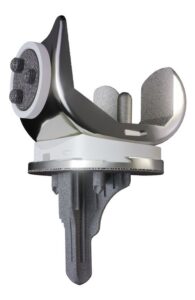
Smith+Nephew’s LEGION CONCELOC Cementless Total Knee System
Materials and Coatings
Maxx Orthopedics recently announced that it secured Investigational Device Exemption approval from FDA for a staged study of its Freedom Total Knee System in collaboration with Invibio, which contributed a PEEK-OPTIMA femoral component. The study will compare the Freedom Total Knee System with the PEEK-OPTIMA femoral component to a controlled registry of the same system using traditional metal femoral components.
Perine noted that advancements in materials and manufacturing — particularly in the large joint sector — are driving revolutionary changes in joint replacement development and delivery. He noted that polymers, coatings and surface treatments are enhancing compatibility between implants and underlying bone, potentially reducing some long-term risks.
Perine pointed to titanium niobium nitride and similar coatings as increasingly appealing due to their combined wear resistance and protective qualities, particularly as surgeons aim to extend implant longevity and address unexplained post-op discomfort that could be caused by metal sensitivity.
“We view PEEK as the most promising candidate for a radical material shift,” Perine said. “It not only eliminates metal and its potential sensitivity but also closely matches the mechanical properties of cortical bone. The potential for PEEK to reduce stress shielding, enhance underlying bone quality and even improve wear rates is particularly compelling. We’re collaborating closely with partners, regulatory agencies and clinicians to explore these possibilities.”
PEEK is a durable, thermoplastic polymer widely used in engineering applications, from aerospace to medical devices. As orthopedic R&D teams look to enhance their joint replacement products, some are considering PEEK for the first time.
While Perine acknowledged that hydroxyapatite (HA) remains the gold standard for osteoinduction, he highlighted formative developments involving substituted HA that offer antibacterial properties, along with similar innovations using silicon nitride.
“Calcium phosphate ceramics are also being explored as resorbable alternatives to HA,” Perine said. “The primary objectives of these evolving products are to improve initial fixation and reduce infection risks that can cause early loosening and require revision surgery.”
Joint replacement surgery is highly successful, yet some patients still experience dissatisfaction with the results. “By using materials that more closely resemble the resected bone and by optimizing the compatibility between the implant and the underlying anatomy, we hope to narrow that gap,” Perine said.
Perine emphasized that the solution doesn’t lie in a single material or manufacturing method but rather in a combination of versatile approaches that are integrated with predictive and supportive technologies to tailor the best implant for individual patients. “I envision all these elements converging within the next five years,” he said.
Smith+Nephew offers its proprietary OXINIUM◊, oxidized zirconium, as a unique advanced implant material exclusive to its joint replacement systems. The ceramic surface material is engineered to deliver the toughness of metal.
According to Smith+Nephew, combining OXINIUM with cross-linked polyethylene consistently demonstrates exceptional survivorship rates across all causes and low revision rates in various joint registries worldwide when compared to traditional materials combined with cross-linked polyethylene. The company said OXINIUM’s properties reduce wear, enhance strength and stability, provide resistance to fretting and corrosion and improve biocompatibility.
Davila said Smith+Nephew’s JOURNEY II◊ TKA system effectively restores natural motion. “This combination also significantly lowers wear rates compared to cobalt chrome implants,” Davila said.
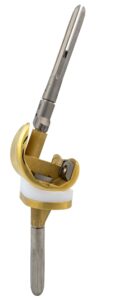
Maxx Orthopedics’ Freedom Total Knee System with the PEEK-OPTIMA femoral component in partnership with Invibio.
Cementless Fixation
The reported advantages of cementless knee implantation include reduced operating time because there is no need to mix and wait for cement to cure and a growing recognition of the long-term fixation benefits that bone ingrowth can provide. “We’ve seen surgeons who were initially hesitant to adopt our cementless offering quickly gain confidence and increase their usage,” said Trey Rodgers, Ph.D., Research Principal Engineer II at Zimmer Biomet.
Zimmer Biomet’s Persona OsseoTi Keel Tibia cementless knee replacement system offers a porous and press-fit knee implant design to deliver stable initial and biological fixation. The design philosophy emphasizes stability, surgical flexibility and anatomic fit.
“Stability is primarily driven by the optimization of the press-fit feature and our osteotype porous metal lattice, which promotes biological fixation to the bone,” Dr. Rodgers said. “Versatility stems from the similar bone preparation required for the system’s cemented and cementless tibial keel designs, allowing surgeons to make last-minute decisions based on bone quality.”
Dr. Rodgers noted that the anatomic fit of the Persona system is enhanced by Zimmer Biomet’s extensive catalog of patient bone model data, which has informed the development of high-coverage side and size-specific tray shapes that extend to the cortical wall.
Cementless knee implant design development is focused on achieving a direct bone-contacting surface that addresses short- and long-term fixation and stability. “In the short term, we have optimized our designs to minimize micro-motion through the keel-and-peg configurations, along with press-fit optimization,” Dr. Rodgers said. “Our size-specific keels and spikes feature a progressive interference fit, resulting in exceptional pull-out strength.”
For long-term stability, surface lattice structure allows for bone ingrowth into designed porous material. “Additive manufacturing provides the freedom to create the lattice structures we desire without being constrained by traditional manufacturing processes,” Dr. Rodgers said. “Previously, many porous materials lacked fully interconnected pores, which limited their effectiveness.”
Dr. Rodgers acknowledged the prevailing perception among surgeons that cement provides the best option for optimal initial fixation but noted that bone ingrowth into porous material will enhance fixation over time. He also noted that historical revision rates of knee replacement surgery range from 6% to 10% at the 20-year mark and added, “Registry data indicates that younger men are experiencing better results with cementless implants.”
Zimmer Biomet’s metal 3D printing process allows for the creation of a bone-mimicking cancellous structure, enabling precise control over pore size, porosity and surface roughness. “We’ve had significant success with this bone lattice in our G7 Acetabular cup, and recently, we’re observing similarly positive results with knee implants,” Dr. Rodgers said.
According to Dr. Rodgers, factors such as cortical wall coverage and anatomical fit are crucial for achieving optimal bone fixation. He said Zimmer Biomet is increasingly implementing revisability features into knee implant designs. “If an implant needs to be removed, having the ability to detach the keel is essential, and we can incorporate that into our designs thanks to 3D printing,” he said.
Various factors enhance the design and manufacturing of 3D-printed knee implants, including coatings that enable better inspection processes. Additionally, post-processing techniques, such as various heat treatments and hot isostatic pressing, can improve fatigue strength.
“One key takeaway from my discussions with our senior development team is the ability to iterate designs much faster with 3D printing than with traditional manufacturing methods, leading to better-optimized outcomes that were previously unattainable,” Dr. Rodgers said.
However, Dr. Rodgers cautioned that additive manufacturing isn’t a silver bullet in the development of cementless designs.
“It requires a deep understanding, and it interacts with various aspects of design, manufacturing, materials and regulatory challenges,” he said. “If approached correctly, mastering these complexities can provide a significant competitive advantage. If you don’t exercise it well, you’ll add a lot of cost to an implant development project.”
PM
Patrick McGuire is a BONEZONE Contributor.



